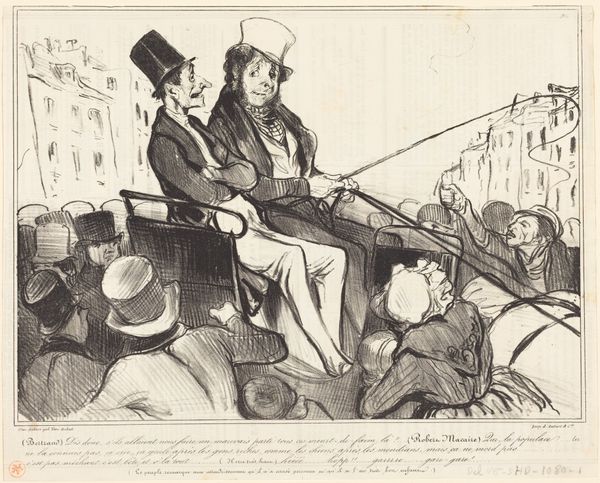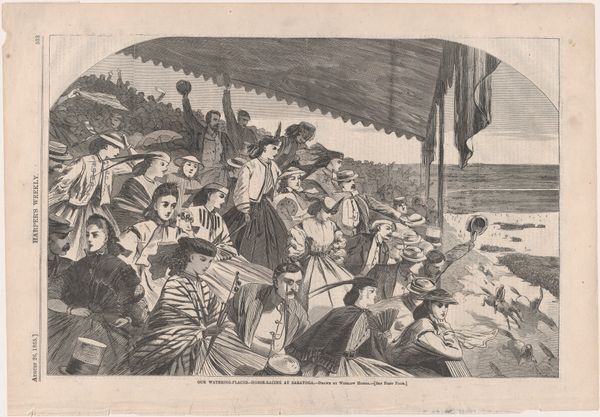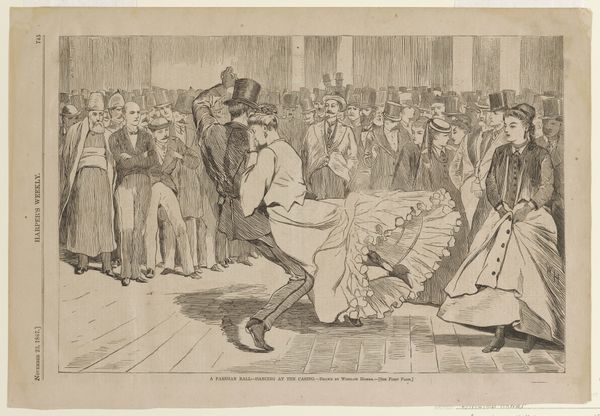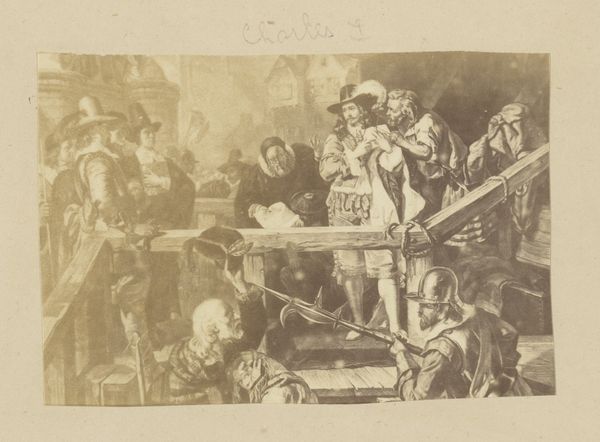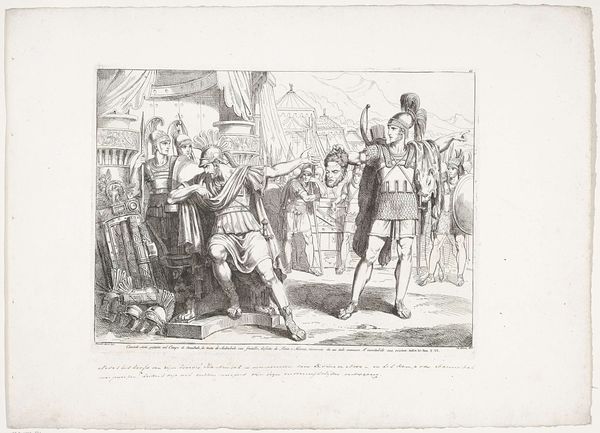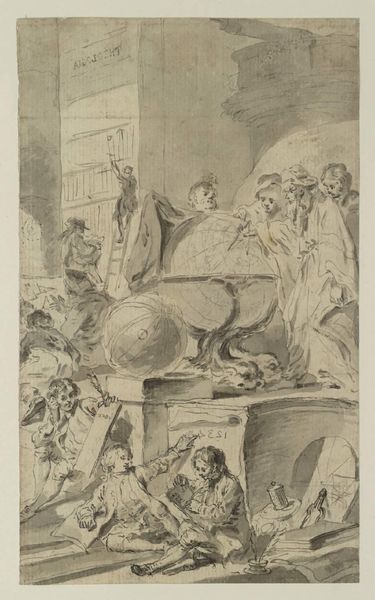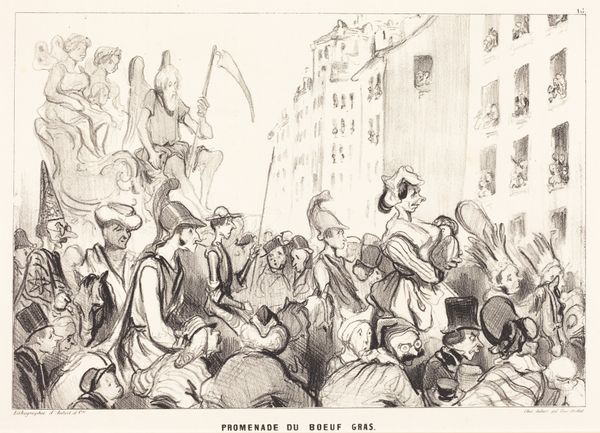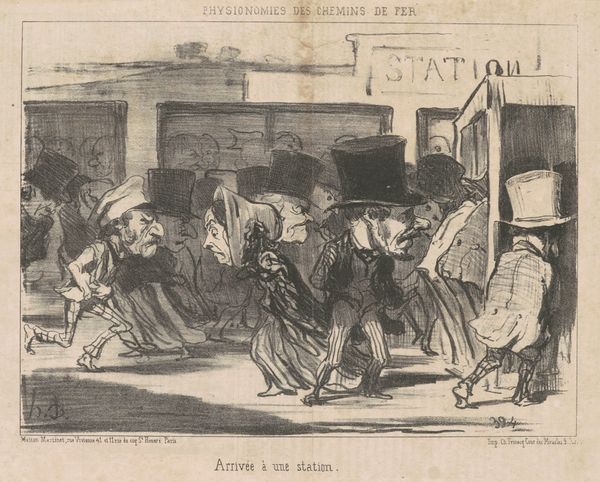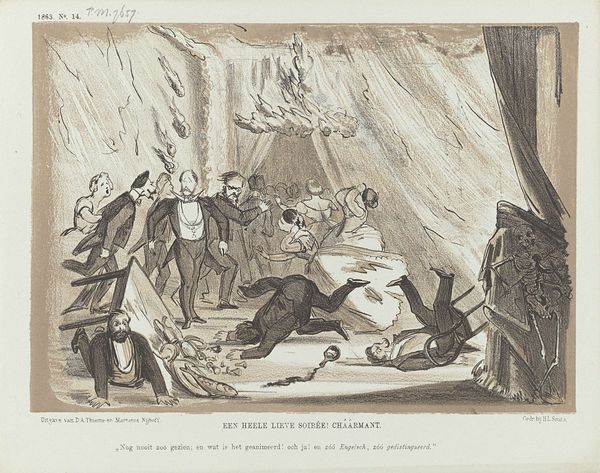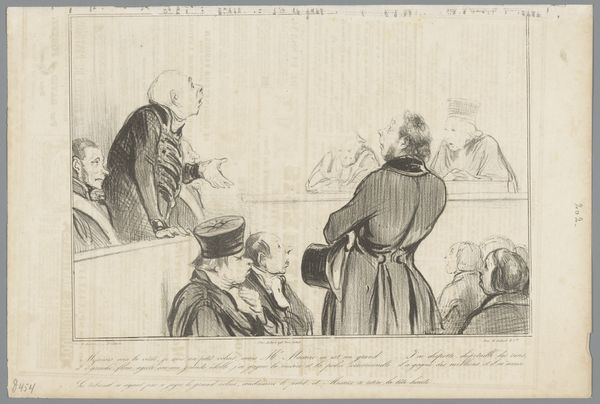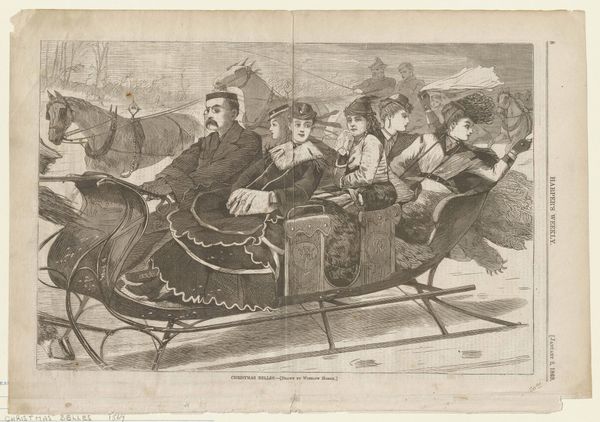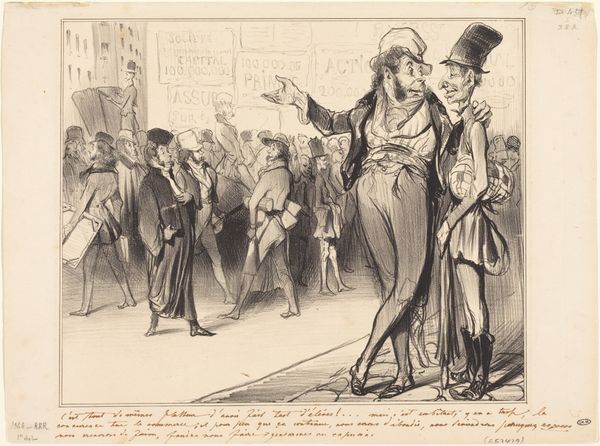
drawing, lithograph, print, graphite
#
drawing
#
lithograph
# print
#
caricature
#
graphite
#
genre-painting
#
realism
Copyright: National Gallery of Art: CC0 1.0
Curator: Look at this piece by Honoré Daumier, "Triomphe de la probité politique commerciale," dating from the 19th century. It’s a lithograph, featuring graphite, characteristic of his print work. My immediate thought is how incisive, and frankly, funny, it is. Editor: The frenzy really grabs you, doesn't it? The layering of the crowd... it almost feels like you could reach out and touch their hats and outstretched arms. What papers were available and what kind of ink was used? You get the sense there were many made; its reproducibility really says something. Curator: Absolutely. Daumier, a master of social commentary, critiques commercial probity here. The central figure reclines almost ridiculously, surrounded by what appears to be a mob of well-wishers or perhaps, opportunistic vultures. Editor: Vultures, yes. The body language speaks volumes. Look at how those reaching for the man appear quite stressed, or maybe crazed. They're all competing to obtain the resources, whatever they are, that this character supposedly can offer. I am also noticing that the paper looks almost industrialized and I wonder how the economics of labor were distributed. Curator: And this ties into Daumier’s political leanings; his career highlights the corruption that was evident during the era. The caricature reveals not only political statements but how art actively shapes the views of the audience it touches. Editor: Speaking of labor, consider the labor that created the materials: paper and ink, then the hands and labor used to produce such a graphic—all circulating the artwork across social spaces, allowing an opportunity to critique the elite with accessible visual material culture. It all seems very grounded in its process. Curator: It's fascinating how he employs the realism style to bring forth something so satirical. This approach also highlights Daumier's complex interaction with public opinion, questioning how authority figures maintained control. Editor: I agree. It’s a raw slice of production with layers that reveal social labor; the drawing looks like it’s right out of a back alley. Curator: Indeed. I see this artwork as a reminder that public sentiment in politics often clashes with the actions, or lack thereof, by public figures. Editor: Exactly. The material context just reinforces this sense of frenetic exchange, driving Daumier’s biting point home with tangible impact.
Comments
No comments
Be the first to comment and join the conversation on the ultimate creative platform.
